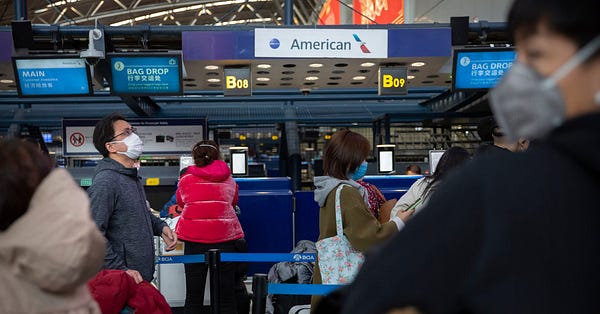It’s Sunday April 5th.
India has recorded more than 100 deaths and over 3,500 confirmed cases of coronavirus.
Over 100 healthcare workers including doctors and nurses from Delhi’s Gangaram hospital have been quarantined after they came into contact with two patients that later tested positive for the coronavirus. The Delhi health minister has said that hospitals in Delhi only have enough PPE for 2 or 3 days, and have requested enough to last a few weeks.
As private hospitals begin treating patients for COVID-19, there are questions over the cost of the treatment. Up until now, no regulations or protocols have been announced by the government. So far, patients have been billed between 6 to 12 lakh rupees ($7 to 15 thousand dollars) for treatment.
Could pool testing work for India? This week the health ministry evaluated a different testing methodology that tests a combined sample from multiple people at the same time, which has been used in other countries to save costs and time.
Tonight at 9PM, hundreds of millions of people are expected to switch off their lights and light lamps on their door steps and balconies for 9 minutes, after a request from Prime Minister Modi to show solidarity to fight against the virus. It is hoped that there will not be a blackout afterwards from the shocks to the power grid.
And a photo gallery of relatively empty spots in New Delhi during the lockdown from the Hindustan Times.
US and International:
In the U.S., President Trump said “there will be a lot of death,” while also saying he would like to consider the possibility of allowing outdoor church gatherings for Easter Sunday. Meanwhile, new hotspots are emerging in Washington D.C., Pennsylvania, and Colorado.
Several states continue to be desperate for medical supplies including masks. Details have emerged of the lengths to which state officials are going to bid and procure them, including Illinois officials who handed over a check for more than $3.4 million at an interstate highway to a middleman to purchase 1.5 million N95 masks from China.
In California, undocumented farmworkers have been asked to continue working despite the stay at home orders, and been given letters declaring them part of “critical” services.
As reports emerge that it could take till September for the one-time check of $1,200 to reach Americans who qualify for coronavirus stimulus, Germany’s Berlin city has acted efficiently. 5,000 euros have already been dispersed as funds to freelancers and small businesses.
Hope for Italy turning the corner as its ICU cases drop for the first time. The number of new infections has also plateaued, and authorities are considering allowing those with antibodies for the virus to go back to work and exit the lockdown. Researchers are “uncertain, if not hopeful, that antibodies in fact indicate immunity.” These interactive maps show how the virus spread in Italy and its lockdown came too late. Because of this, authorities are worried it’s too early to loosen the measures.
Recommended reads:
A new investigation from the NYTimes reveals 430,000 people travelled directly from China to US since China disclosed the outbreak to the WHO. 40,000 people travelled directly from China to the U.S. after Trump’s travel restrictions.


A visual and graphic explainer of the biochemistry of the SARS-CoV-2 virus’ genome:
Bad News Wrapped in Protein: Inside the Coronavirus Genome, The New York Times
How is the pandemic affecting prospective parents? In the U.S. all fertility treatments have been postponed, and global border closings and travel restrictions are upending adoptions and surrogacies.
The television show “The Office” may be getting a reboot where everyone works from home, keeping up with the times.
Writer Arundhati Roy writes about the pandemic in the Financial Times:
An excerpt:
“Whatever it is, coronavirus has made the mighty kneel and brought the world to a halt like nothing else could. Our minds are still racing back and forth, longing for a return to “normality”, trying to stitch our future to our past and refusing to acknowledge the rupture. But the rupture exists. And in the midst of this terrible despair, it offers us a chance to rethink the doomsday machine we have built for ourselves. Nothing could be worse than a return to normality.
Historically, pandemics have forced humans to break with the past and imagine their world anew. This one is no different. It is a portal, a gateway between one world and the next.”



